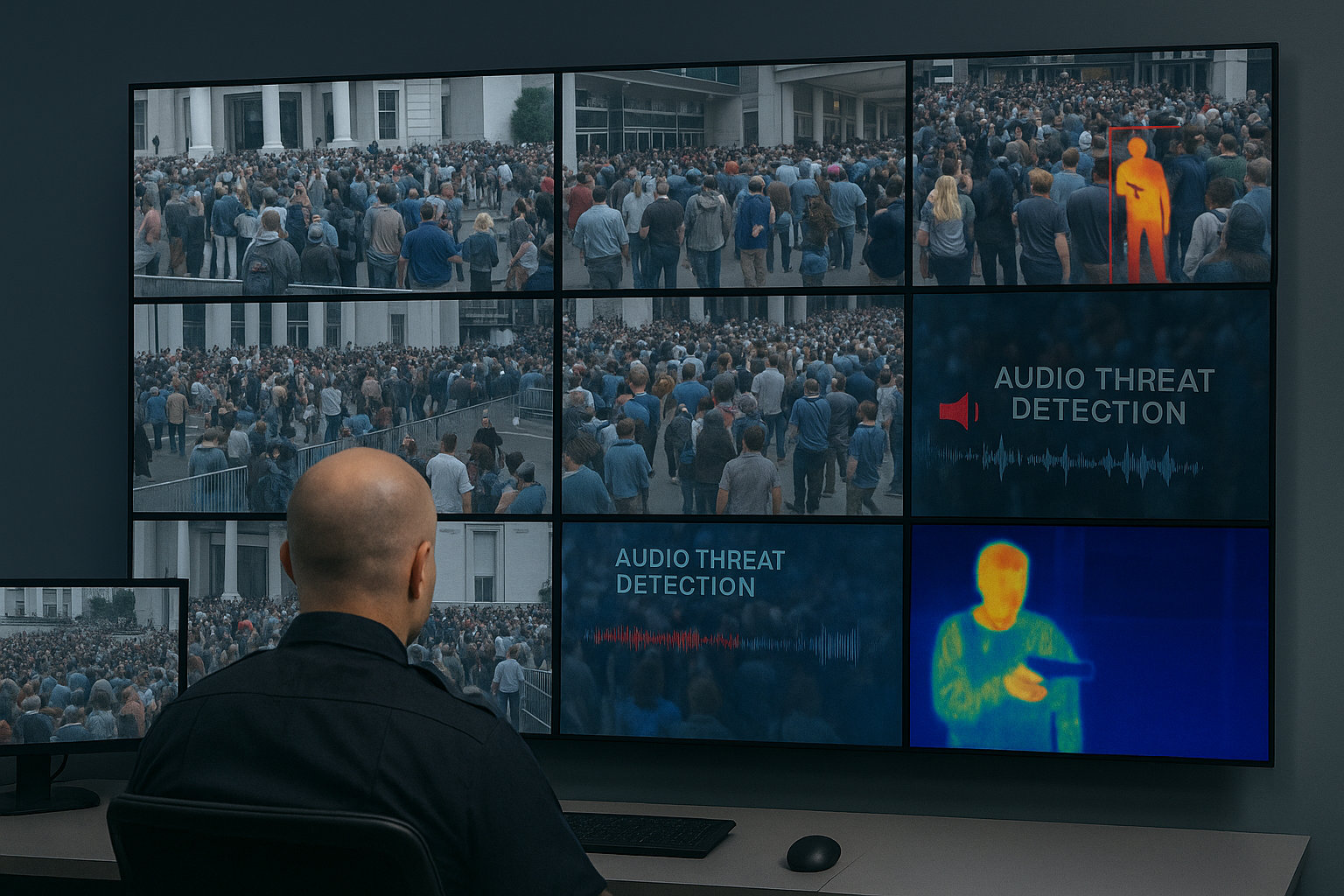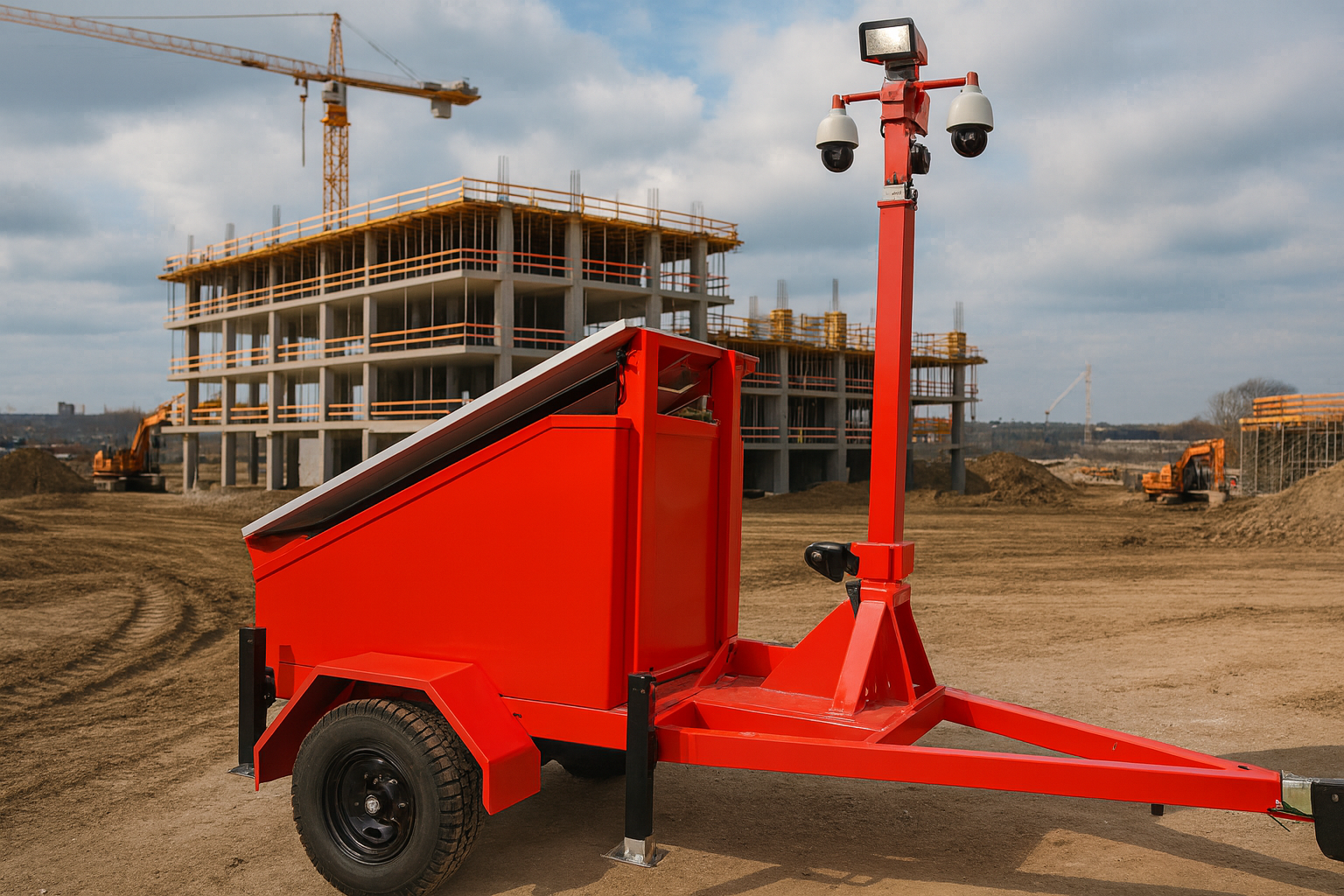TL;DR: Weapons detection finds physical weapons at or before an entry point, giving a clear, object-level alert. AI threat assessment analyzes behavior and context to spot escalation early. Use both together: weapons detection confirms a physical threat, and AI gives early warning so your team can act faster and with fewer false alarms.
Weapons Detection vs. AI Threat Assessment: What’s the Difference?
If you manage security for a school, hospital, dealership, or multi-site facility, you already know that a single layer of defense leaves gaps. Relying only on a metal detector or only on video cameras lets some risks slip through. Understanding what weapons detection does and how AI threat assessment complements it helps you build a layered program that stops incidents earlier and reduces costly false alarms.
What is weapons detection technology?
Weapons detection systems look for physical objects such as firearms or knives. Typical technologies include magnetometers, millimeter wave scanners, acoustic or muzzle flash detection, and vision-based tools trained to recognize visible weapons. Vendors you might recognize include ZeroEyes and Shooter Detection Systems. These tools are strong at giving a definitive alert that a weapon is present. That clarity is valuable, especially at controlled entry points and high traffic screening areas.
Weapons detection is object-focused. It tells you there is a weapon. It does not always tell you whether someone intends harm or what will happen next. Your response still depends on how quickly personnel or first responders act on the alert.
What is AI threat assessment?
AI threat assessment watches behavior, not just objects. It uses video analytics, pattern detection, and sensor inputs to flag things like pacing, clustering, aggressive gestures, loitering in sensitive areas, or sudden escalation in a crowd. Vendors and platforms such as Avigilon analytics and Motorola Solutions apply machine learning models to live camera feeds to surface high-priority events to operators.
The value of AI threat assessment is early detection. It can identify a brewing situation before a weapon appears, giving security teams more time to intervene. It also provides context that helps prioritize responses, like whether behavior is isolated or likely to escalate.
Weapons detection versus AI threat assessment: quick comparison
Primary focus
Weapons detection: object identification, usually at choke points or entry screening.
AI threat assessment: behavior and context across broader areas.
Timing
Weapons detection: alerts when a weapon is present or drawn.
AI threat assessment: can flag suspicious behavior before a weapon is visible.
Best locations
Weapons detection: entrances, gates, checkpoints, event screening.
AI threat assessment: parking lots, lobbies, production floors, multi-site monitoring centers.
Strengths and limits
Weapons detection gives a high-confidence, object-level trigger but is limited to detecting items.
AI assessment detects patterns and escalation, but can generate false positives if not tuned for the environment.
How they work together
AI can provide an early warning that focuses resources on a target area. Weapons detection can then confirm whether a weapon is present to guide an appropriate response.
Cut False Alarms in Half
A regional car dealership had multiple small incidents in its service lot. Cameras alone produced too many low-value alerts, and walk-through screenings were impractical. Hoosier Security helped them deploy AI analytics to flag loitering near high-value vehicles and suspicious entry patterns after hours. The dealership then installed targeted vision-based weapons detection at the front lobby entrance. After integration, operators received fewer low-priority alerts, but when an actual weapon-related alarm occurred, it was confirmed quickly. The combined approach reduced average response time by 35 percent and cut false alarms by nearly half.
How to choose the right mix for your site:
Map your risk zones. Identify controlled entry points, open public spaces, and sensitive internal areas.
Start where you need confirmation. Use weapons detection at primary entrances and screenings.
Use AI for broad coverage. Deploy behavioral analytics across parking, common areas, and remote lots.
Integrate alerts. Send both types of alerts to the same operator dashboard so staff see context and confirmation together.
Tune and test. Work with your integrator to adjust sensitivity, run real-world drills, and collect feedback.
Train people. Technology helps, but trained staff remain the final decision makers.
FAQ
Q: Do we need both systems, or is one enough?
A: Most facilities are best served by a hybrid approach. Weapons detection gives object confirmation. AI threat assessment gives early warning and context. Together, they reduce response time and lower false positives.
Q: Will AI replace my security team?
A: No. AI is a force multiplier. It surfaces relevant events faster so your team can focus on high-priority incidents and make better decisions.
Q: What about privacy and false positives?
A: Choose vendors that support privacy controls and local data policies. Use a thoughtful rollout and regular tuning to reduce false positives. Test in real conditions before full deployment.
Q: Which vendors should I consider?
A: Look at reputable providers and how well their solutions integrate. Examples in this space include ZeroEyes for weapon recognition and Avigilon or Motorola Solutions for enterprise AI analytics. Ask how each solution integrates with your VMS and access control.
See it in Action
See these technologies in action and get a tailored recommendation for your facility. Schedule a tour of Hoosier Security’s Experience Center or request a site assessment. We will map risks, show integrated demos, and outline a 3-step plan to reduce risk and improve response.









